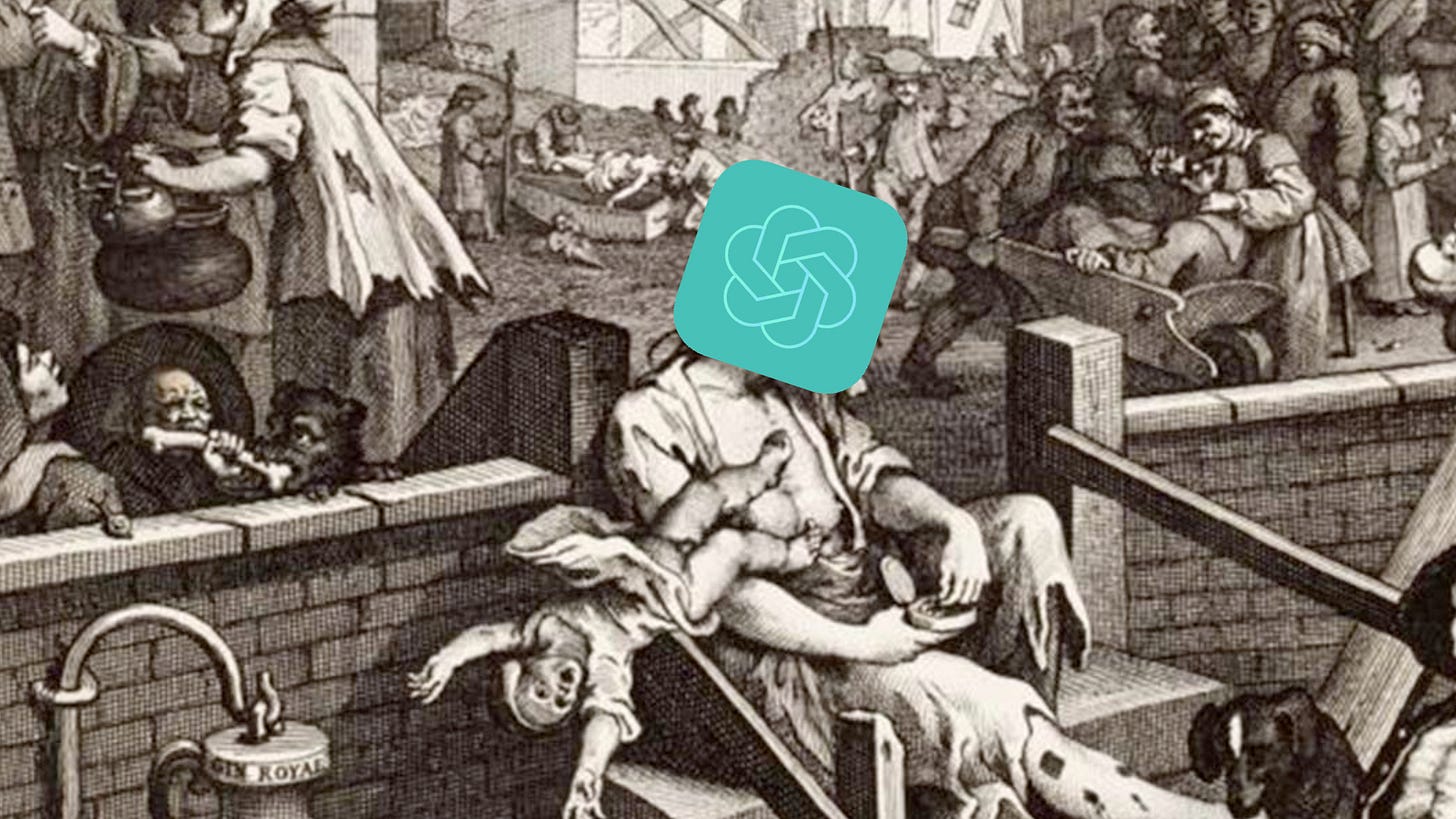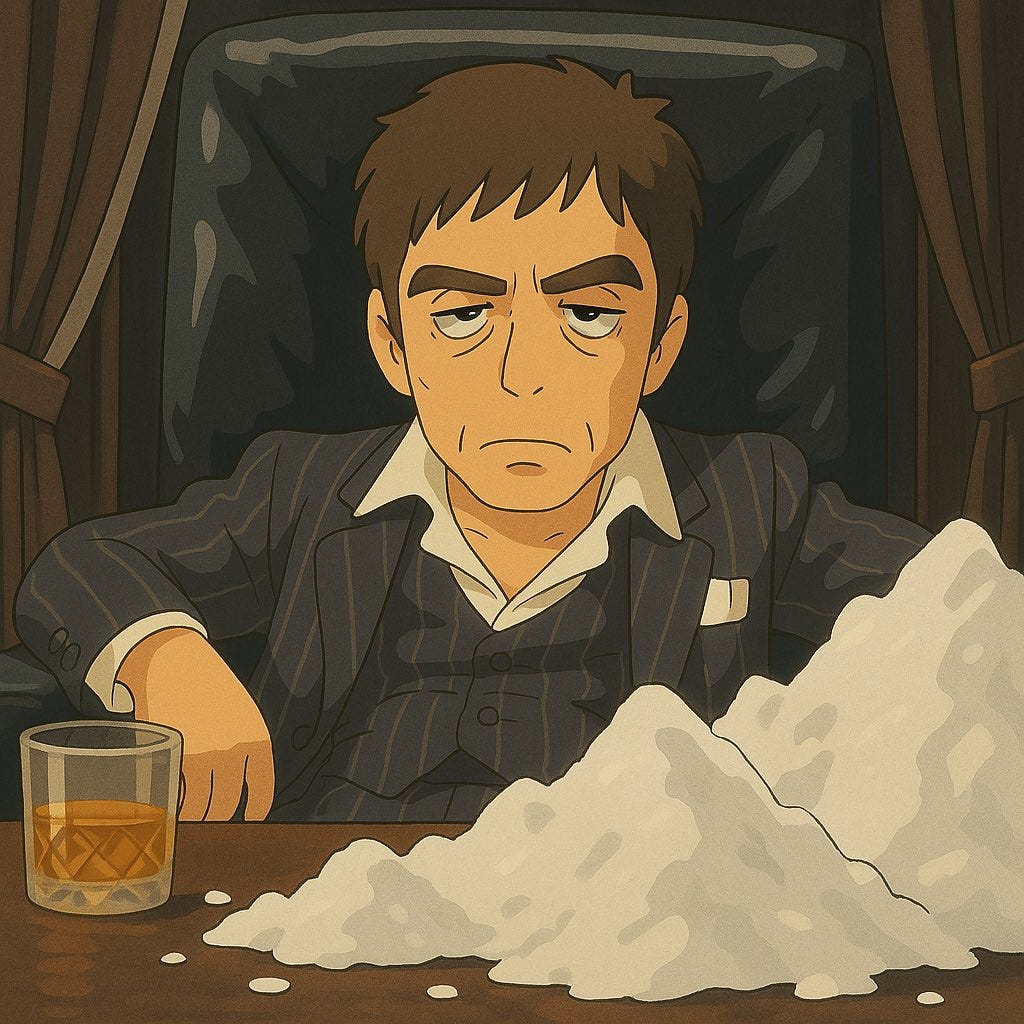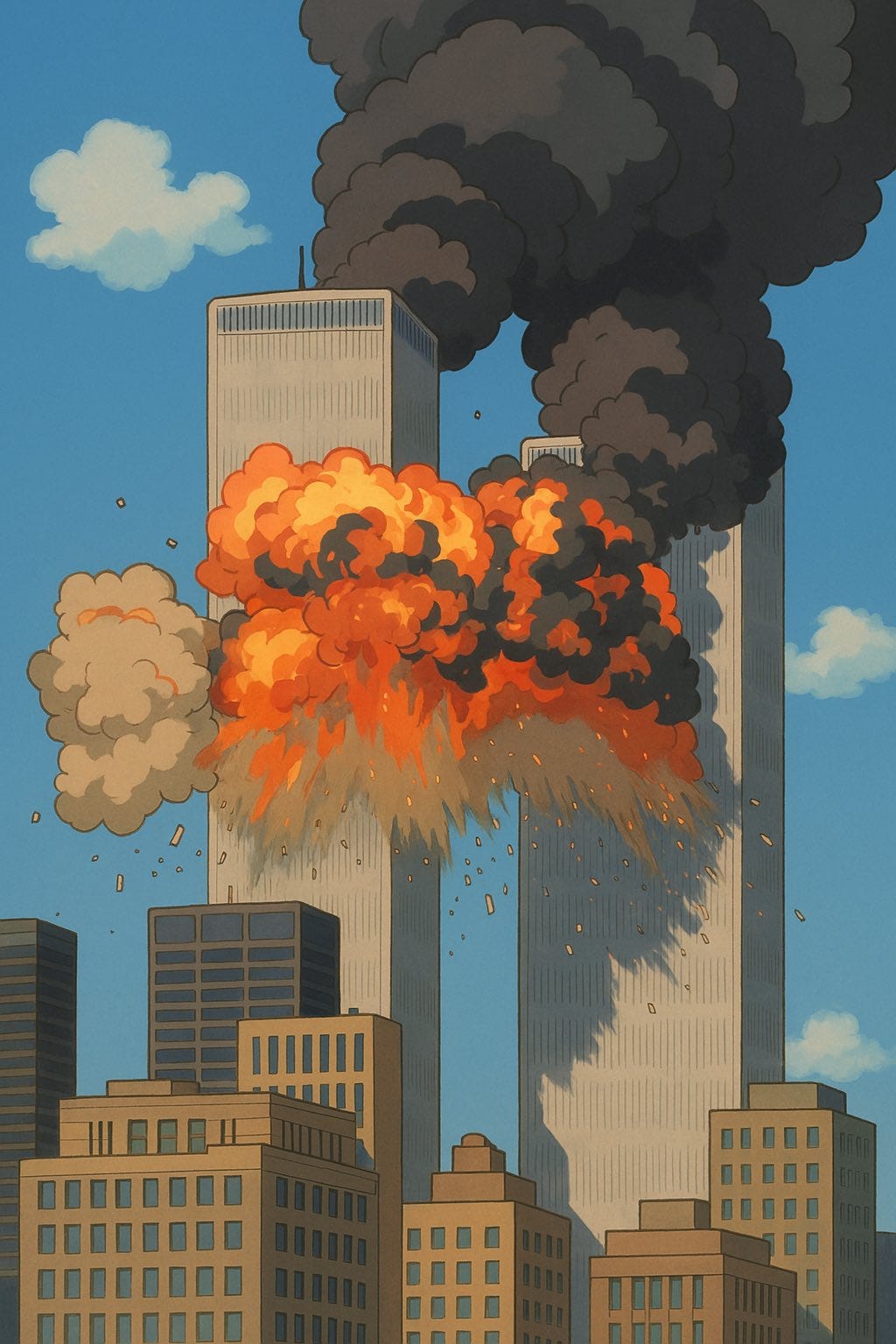Studio Ghibli AI slop
Dark signs of dark times
Ugh. Ugh ugh ugh. One more time: ugh ugh, ugh, ugh, ugh ugh ugh.
Truly, I wish we could stop talking about AI being The Absolute Worst, but, pals, here we go again.
This week, ChatGPT overhauled its image generation capabilities. Historically, it’s been a predominately text-based system, with spin-off DALL-E handling pictures. That changed with a recent upgrade that allowed ChatGPT to deal with more complex prompts to produce more detailed images.
Like pigs to slurry-coated shit, many people online raved about these new capabilities. This led to something horrible happening: folks realising they could use ChatGPT to convert pictures into Studio Ghibli-style images.
The trend was kicked off by a fella by the name of Grant Slatton on Twitter/X:
From here, a deluge of people flooded social media with images aping the anime giant’s aesthetic. This included lots of family pictures like the above, but also scenes from movies and popular media:
And, of course, “edgier” content:
While it’s possible to see this as a bit of fun, I simply cannot. I’m viscerally disgusted, I want to vomit and salt the earth simultaneously. This trend is insulting on a core level, so let’s unpack why.
It shits all over everything Studio Ghibli stands for. How’s that?
While, personally, I’m not a huge fan of the anime producer’s work, you can’t argue that its movies — from Spirited Away to My Neighbour Totoro — are labours of love, all beautifully constructed, hand-drawn pieces of art that redeveloped and redefined an entire genre.
These AI-generated images couldn’t be further away from that ethos. They look similar, yes, but they’re empty, a mask, a veneer, a pale imitation.
These cheap knock-offs wouldn’t and couldn’t exist without Studio Ghibli. There’s nothing new or interesting, just a hollow groping at something worthwhile. And I can say one thing for sure: the company and its creatives are bound to hate it.
Take for example, Hayao Miyazaki — the co-founder of Studio Ghibli. When shown an AI-generated computer model, he says he’s “absolutely disgusted,” finding it to be “an insult to life itself.”
Right on, Miyazaki, right on.
Despite all this hand-crafting and tireless work to create an aesthetic, OpenAI clearly still went ahead and scraped Studio Ghibli material for ChatGPT. This is another core issue with this sort of image generation: it makes money from jacking human work. Those people are never paid or even attributed. It’s a scam.
The silly thing is this stort of Studio Ghibli image conversion tool has existed for years. Yes, modern AI is better at making something look like it’s out of Howl’s Moving Castle, but it’s not really doing anything new. It’s iterative.
There’s also something about the celebration of these pictures, where people are mixing two contrasting things together (“What would Severance look like if it was directed by Wes Anderson!?!?”) that’s reductive for culture.
It’s not clever or interesting, it’s a form of entertainment so base that only teenagers should be impressed. When you think about it, it’s a modern version of those old videos of people singing ukulele versions of rap songs; funny when you’re 14, but something anyone older should have the good grace to be utterly embarrassed by.
The difference now, though, is that the CEO of a multi-billion dollar company is celebrating this “advancement” as though it’s not a heinous indictment of where we’re at socially.
It’s the lack of artistry behind all this that bugs me.
Let’s compare these AI-generated images to something that could be seen as similar, memes. On the surface, both often use pre-existing images and variations on a popular theme — but that’s where the similarity ends.
As I’ve written about before, memes are more than just pictures or videos, they’re a form of modern communication. They contain subtext, self-referentialism, and commentary on society. They’re a breathing, constantly evolving reflection of the state of our world.
AI-generated images on the other hand are a modern version of a crayon drawing. Interesting if done by a toddler, humiliating if created by anyone else.
But people online fall over themselves to praise these pictures. It’s bizarre.
In real-time, we’re watching online culture get dumbed down and companies make billions from blatant theft. Not long ago, there was a moral panic about people downloading albums on Napster, but what OpenAI and other companies are doing is far, far worse. The only people who seem to actually care, though, are creatives.
It’s Nero fiddling while Rome burns on a grand scale.
It’s all well and good getting wound up about ChatGPT’s demolition of artistic morality, but that’s not enough here at The Rectangle. Instead, we need to think about how all this can be solved.
Fundamentally, artificial intelligence is here to stay. It’s a technology that, as much as it pains me to admit it, has its uses. Plus, people enjoy it. Things people enjoy rarely disappear. That doesn’t mean it has to stay static though.
To begin with, there should be broad copyright rules introduced. Artists, writers, and, really, anyone who has had their work included in these models should be paid. Now, this might be impossible, but that ties into the next part: AI companies must be nationalised. Maybe internationalised, if such a thing was possible.
We’re witnessing the heist of everything, from movies and artworks, to code and science. AI businesses profit from the output of the entire human race, yet this is siphoned off so only a tiny percentage benefit.
It’s history’s greatest smash and grab: monetising what it means to be human.
Companies making LLMs and the like must be used to fund Universal Basic Income. If AI systems exploit human endeavour, then every human should be compensated for it.
Beyond that, we have to ensure that artificial intelligence is made as uncool as possible for the mouth-breathing normies swooning over a Muppet version of The Godfather. This will happen naturally (I hope), but one way we can speed it up is through enforced tagging. AI-generated “art” should be labelled as such. Everywhere, watermarked and embedded in files. It must be flagged. Make people aware of what they’re looking at: slop.
Ultimately, I like to think of myself as an optimist. Technology is badass. We’re blessed to exist in this era where we can access unlimited information and live with a level of comfort that royalty in days gone by could only dream of.
That doesn’t mean we have to blindly accept every advancement though.
The proliferation of AI overspill, this disgusting, soulless slurry that insults the very idea of art shows this clearly. Something’s broken. Not only in the fact that this is allowed, but people are genuinely happy about it.
Honestly, I’m not even that mad at those people. Because somewhere, at some time, society failed them, just like how it’s failing artists now.
Yet it can be fixed. I have to believe that. We’re better than Studio Ghibli AI slop. We have to be, otherwise, I’m not sure what the point of all this really is.







